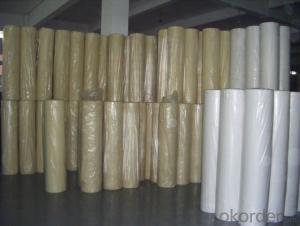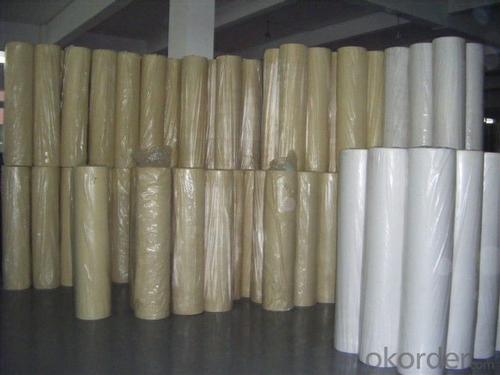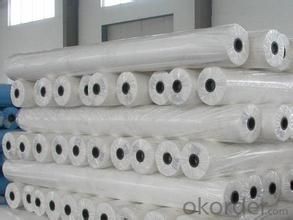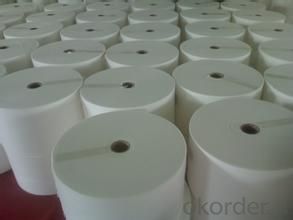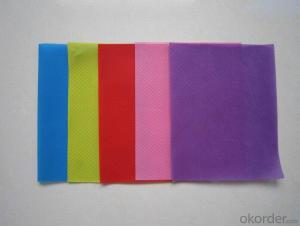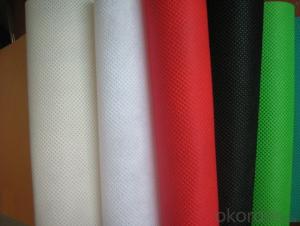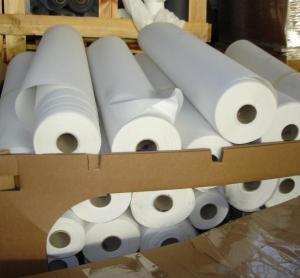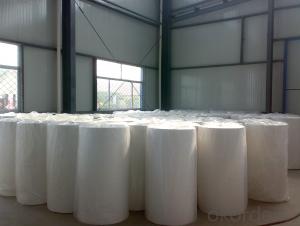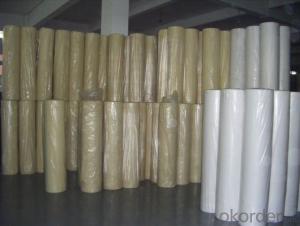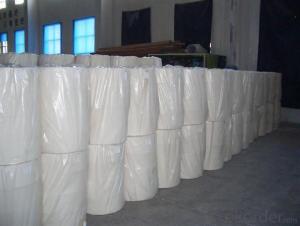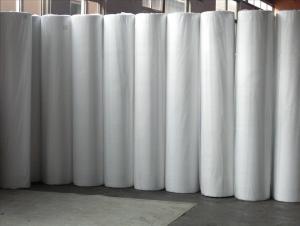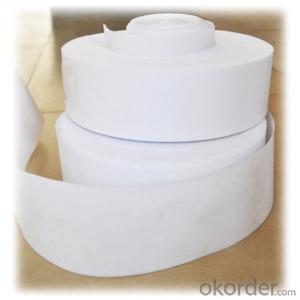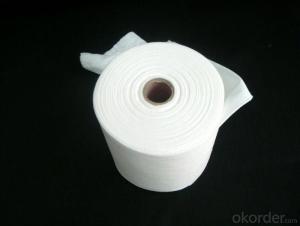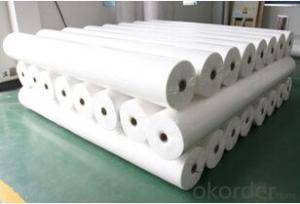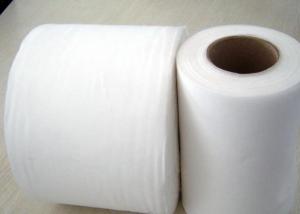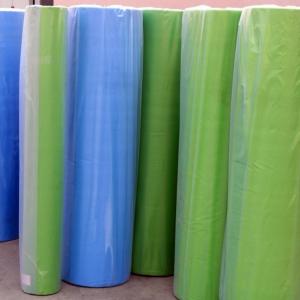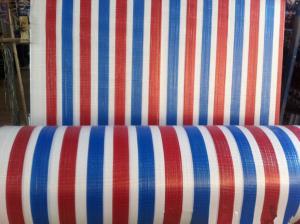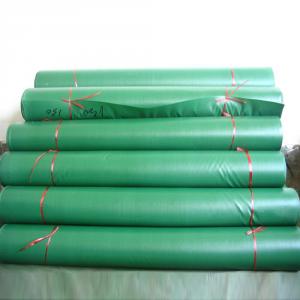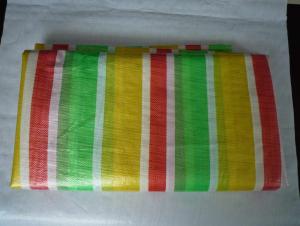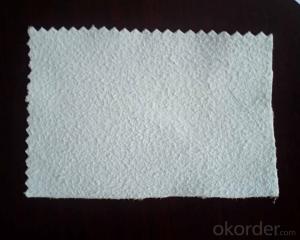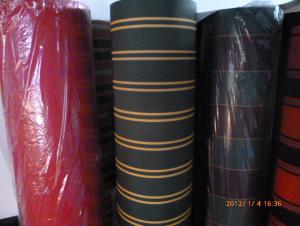Cheap Super Absorbent Non-Woven Fabric, PP Non Woven Fabric, PP Nonwoven Fabric
- Loading Port:
- Shanghai
- Payment Terms:
- TT or LC
- Min Order Qty:
- 1000 roll
- Supply Capability:
- 10000 roll/month
OKorder Service Pledge
OKorder Financial Service
You Might Also Like
The use of landscaping fabrics has become extremely popular in recent years for many reasons:
1. Leisure time is maximised - the need for weeding and on-going maintenance is minimised
2. Environmentally friendly - no need for chemical based weed killers
3. Promotes healthier plants - it allows the soil to breath and water to permeate
We offer different types of weed control fabrics to suit all applications and budgets.
1. Available in a range of sizes & materials to suit various applications from small to large landscaping projects, in both commercial and domestic situations.
2. All our landscape fabrics are UV stabilised
3. Ideal for use under paths, patios, decking, paving, bark mulch, gravel etc.
FEATURES:
1. Weed suppressant and drainage control landscaping fabric
2. Spun bonded non-woven fabric – will not fray when cut
3. Easy to use
4. Environmentally friendly
5. Allows water, air and nutrients through, suppressing weeds without the use of chemicals
6. Good alternative to Plantex® where cost is a factor
7. UV Stabilised
8. Reduces the level of watering required due to the slower rate of water evaporation
FUNCTION:
1. Cover crops in the ground surface,prevent weeds and against the insect
2. Controlling soil humidity and the temperature
3. Does not affect the growth of the crops
4. Protects plants from harmfully solar radiation
5. Air permeability, water permeability help crops growth.
6. Mothproof, eco-friendly, breathable, anti-bacteria, tear-resistant, fusible

Furniture Upholstery
Roofing and Tile Underlayment
Acoustical Ceilings
Insulation
House wrap
Pipe wrap
Sofa and Mattress Lining
Shoes & Garments
Coveralls
Pillow cases
Airline Headrests
Interlinings
Clothing and Glove insulation
Bra and Shoulder Padding
ADVANTAGES:
1. Lower labour costs as no weeding maintenance for years;
2. Water seeps through and can conserve soil moisture for improved growing conditions;
3. Air escapes – humidity rises through the mat for a more controlled growing environment;
4. Increase crop yields close to 25% due to improved growing conditions and absence of water stress and competition of nutrients absorption from weeds;
5. Minimises bacteria and fungus problems especially Algae;
6. Strong, woven construction or pressed fibre sheet resists tears and punctures;
7. Resistant to mildew, rot, water, sunlight and most of the agricultural chemicals
8. Fertilizer is applied on the mat, thus helping the owner or estate manager to monitor the progress of manuring;
9. Prevents soil erosion or leaching of soil nutrients or fertilizers applied;
10. Environmental friendly.
FAQ:
Q .What is the material of the non woven fabric ?
A .PP spunbond non woven fabric
Grade A: 100% Polypropylene
Grade B: 90% Polypropylene +10% filling
Q .What about the width of the non woven fabric ?
A .We can cut the fabric as your requirement. Our width of machine is 240cm, so the max of the width is 240cm
Q .What about the color ?
A .Any color is available. You just need to give me the Panton Num or send me your sample. Then we will make the color samples to you for approve
Q .What about the GSM ?
A .The thinnest of the fabric that we can produce is 9g, and the thickest is 250g. Normally the fabric that used in bag making is 50-100g, the agricultural used is 17-50g, the home used fabric is 40g and so on...
Q .What about the delivery time ?
A .We can finish the production in 2-3 days (40ft HQ)
Q .What about the price ?
A .We are the factory of the PP nonwoven fabric, We can supply you with good quality and favorable price
- Q: What are the test tests for the color fastness of textiles?
- 8, perspiration color fastness 9, dry hot color fastness 10, heat pressure color fastness 11, resistance to water fastness 12, color fastness to brush
- Q: What are the processes of dyeing and finishing of textiles?
- General process: fabric singeing - retreat bleaching pre-treatment - desizing - scouring - bleaching - mercerizing --- dyeing, printing - post-processing.
- Q: What is the amount of alkali in the textile mill
- Made with polyester woven cloth, not suitable for personal wear. Through the printing and dyeing plant in a process called reduction processing, the polyester cloth in a large concentration of caustic soda solution containing corrosion treatment, the total weight of polyester cloth
- Q: Textile industry belongs to the first few industries
- The secondary industry refers to industries that need to be processed from natural sources to produce new products, usually referred to as industry, such as manufacturing, construction, etc.
- Q: China textile products do not how points? What kind of?
- Jiangsu, Zhejiang and Shanghai textile industry's outstanding characteristics of Jiangsu and Zhejiang textile industry momentum of development, the pace of upgrading and upgrading, so that we are deeply shocked, popular inspired. To sum up, Jiangsu, Zhejiang and Shanghai textile industry has the following characteristics
- Q: Is the textile processing and sales tax rate the same?
- Yes, the value-added tax general taxpayer enterprises engaged in textile processing, sales, applicable value-added tax rates are 17%.
- Q: Application of Biological Enzyme in Textile Processing
- Hemicellulase, ligninase in the textile processing applications: natural cellulose fibers contain hemicellulose and lignin, especially linen fiber content is high, do not remove hemicellulose and lignin
- Q: How does the chemical composition of the textile be analyzed?
- The chemical composition of a substance refers to the proportion of each chemical element, expressed in experimental form
- Q: Analysis of import and export of textile
- Data changes show that China's textile industry has entered a cycle from high-speed growth to medium-speed growth, began to adjust the depth of the structure, to speed up the transformation and upgrading of the new history
- Q: What are the products produced by the textile mill?
- From the ingredients that have: cotton, wool, silk, linen and chemical fiber, man-made fibers (viscose fiber).
Send your message to us
Cheap Super Absorbent Non-Woven Fabric, PP Non Woven Fabric, PP Nonwoven Fabric
- Loading Port:
- Shanghai
- Payment Terms:
- TT or LC
- Min Order Qty:
- 1000 roll
- Supply Capability:
- 10000 roll/month
OKorder Service Pledge
OKorder Financial Service
Similar products
Hot products
Hot Searches
Related keywords
